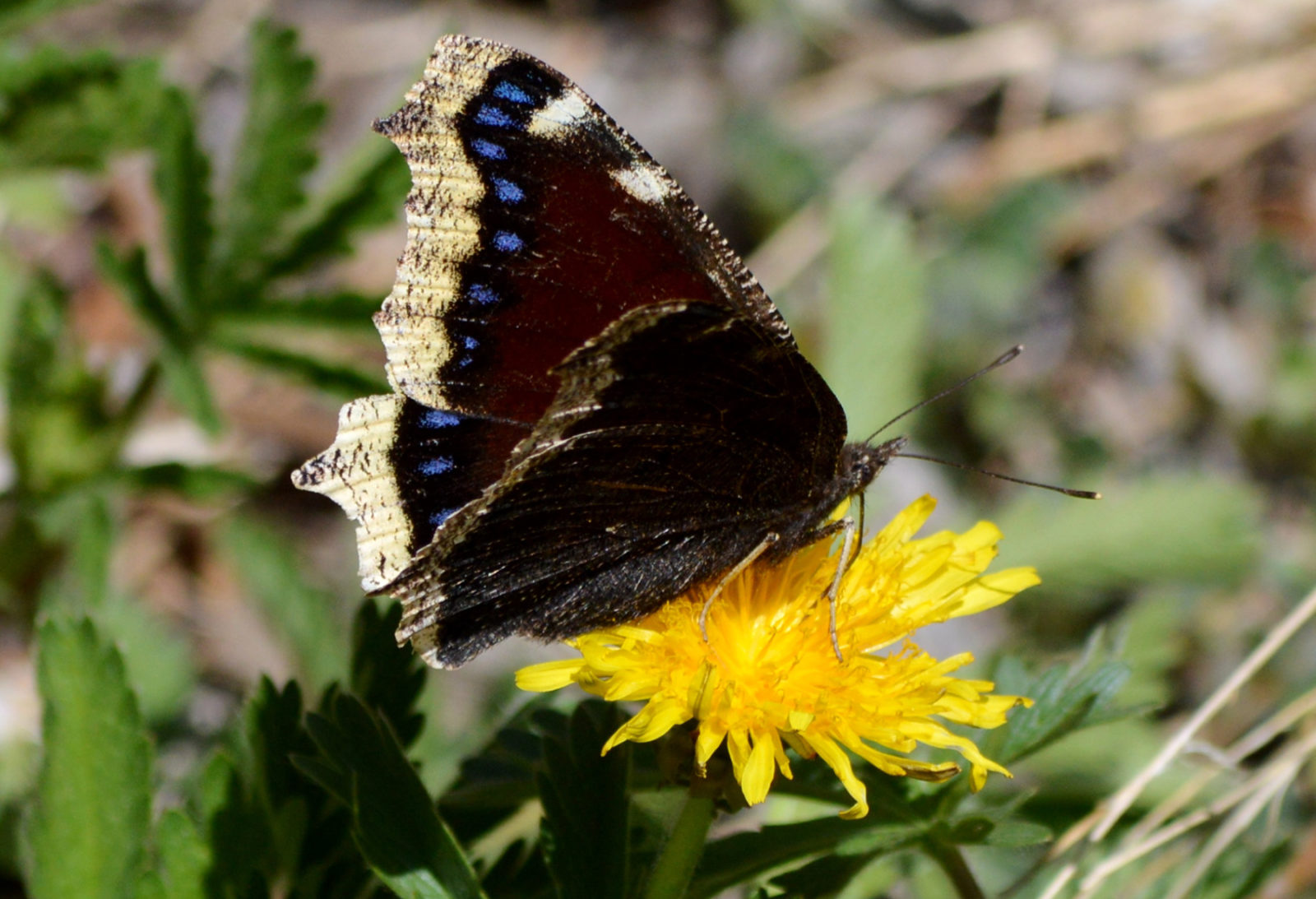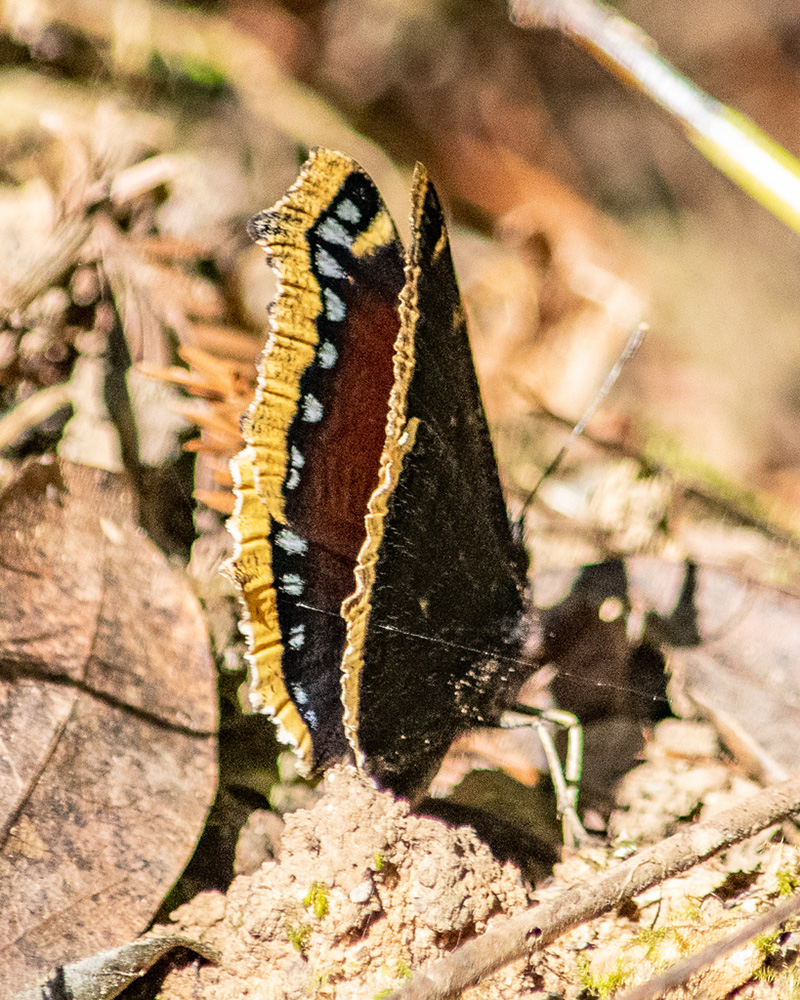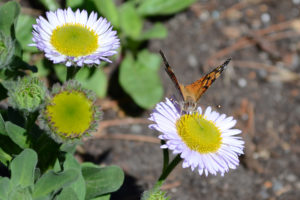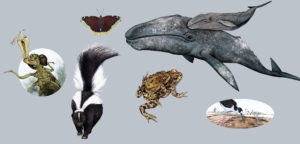
The mourning cloak butterfly, Nymphalis antiopa, is one of the most widely distributed butterflies in the world, ranging across most of the northern hemisphere. In some places like the British Isles it’s quite rare and to find one would make a lepidopterist’s day, but in California it’s a relatively common spring treat. “It’s a real harbinger of spring,” says San Francisco-based lepidopterist Liam O’Brien.
How the butterflies – which do not seem built for open-ocean flight – traveled around the world is an interesting entomological puzzle. Marc Minno, a butterfly ecologist and former president of the Southern Lepidopterists’ Society, suggests they could have flown the 55 miles from Russia to Alaska. To do this however, they would have to battle gusts of 60-80 miles per hour across the Bering Strait. “It’s tough though, they don’t do it often,” if at all, Minno says.
Arthur Shapiro, an ecologist and butterfly expert at UC Davis, says one possibility could be that the species came over when the Bering Strait was a land bridge, though no one knows for sure. Shapiro also notes that these long-distance fliers will occasionally migrate to the British Isles, another open-water journey. “In Britain it’s not a permanent resident and when it is found there it’s only an immigrant from Continental Europe,” he says. “Probably usually from Scandinavia, but nobody is quite certain of that.”
Though they’re becoming increasingly rare in Europe, mourning cloaks in North America are still widespread and fairly common. They’re distinctive large butterflies, with dark maroon wings with yellow rims and a line of light blue spots just inside the yellow band. As the butterflies age, the yellow markings fade to a pale yellow or white and the edges become more tattered, so you can estimate the butterfly’s age by the color and conditions of its wings.
Mourning cloaks are unique in overwintering as adults instead of spending winter as eggs, larvae, or pupae. The adults also live for 8-12 months, far longer than most butterflies, which tend to live for 2-6 weeks as adults.
With such a wide distribution, mourning cloaks adapt their life cycle to the climate. In places with cooler climates and shorter summers like upstate New York, Michigan, and Washington State, mourning cloaks emerge from hibernation and breed once in spring, then the new butterflies emerge in mid to late summer, hibernate in the winter, and the cycle starts over. In warmer places like California the process gets a bit more complicated.

In Northern California, you can see mourning cloaks along the coast or inland from Vacaville to the Sierra. Both populations (coastal and inland) have two separate breeding periods per year—one in spring and one in summer. But while the inland butterflies migrate between sea level and mountain areas above 7,000 feet, the coast-dwellers stay put. For both groups, the spring generation doesn’t hibernate, and the adults only live for six to eight weeks—they appear in late spring, migrate to higher elevation (if inland), breed, then die. The summer generation emerges in late-summer and migrates (if inland) back down to lower elevation in the fall to hibernate.
In the winter, the mourning cloaks find creative places to outlast the cold. They can survive well-below freezing temperatures because they have glycogen “anti-freeze” in their blood. They’ll hibernate in predictable places like trees or roof shingles, but they’ll also find less common hideaways. “They’ll go into birdhouses, they’ll go into porta potties,” says Shapiro, “they’re quite clever about this. I have occasionally found them inside discarded beer cans.”
As long as the spring mating is successful, the spiny black and red caterpillars appear clustered on willow and elm trees along riverbanks in mid- to late-April. Occasionally, the group of caterpillars can completely defoliate their willow or elm host to the point that some parts of Canada label the gregarious fellows as pests. Most of the time though there aren’t enough caterpillars to be too detrimental for the tree.
Shapiro has surveyed butterflies between the Central Valley and Sierra every year since 1972, and says he’s seen mourning cloak numbers vary widely, from only six in 2003 to 85 in 2018, and back down to 35 last year. Minno says for many butterfly species, this variation is common. “Butterfly populations are constantly changing,” he says. “So normal years you see the normal number then all of a sudden there’ll be an outstanding year where there’s just tons of them around and then you may have really bad years where you just won’t see any or you’ll see one or two so that’s pretty typical for butterfly populations.”
Shapiro said in late March that he saw less mourning cloaks in flight in the mountains than he often sees. It’s been a challenging year for mourning cloaks, and possibly many other butterflies. During California’s dry, warm February, O’Brien said he saw unusually high numbers of mourning cloaks at Alum Rock Park in San Jose. But then March arrived cold and wet – usually not what butterflies like. Shapiro’s surveys have come to a halt due to COVID-19 stay-at-home policies, leaving scientists largely in the dark about butterfly populations of any kind this year.
“It’s the biggest disruption to our program since it was initiated way back in 1972,” Shapiro said.




